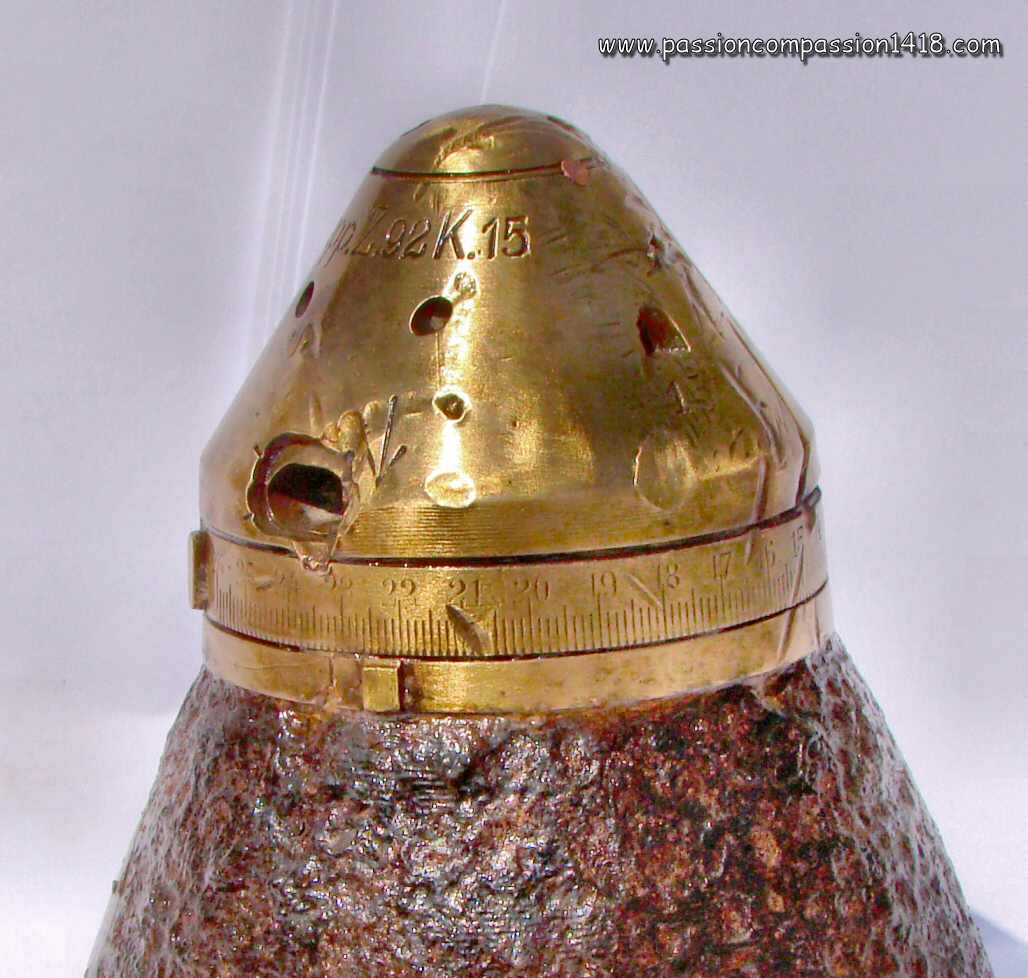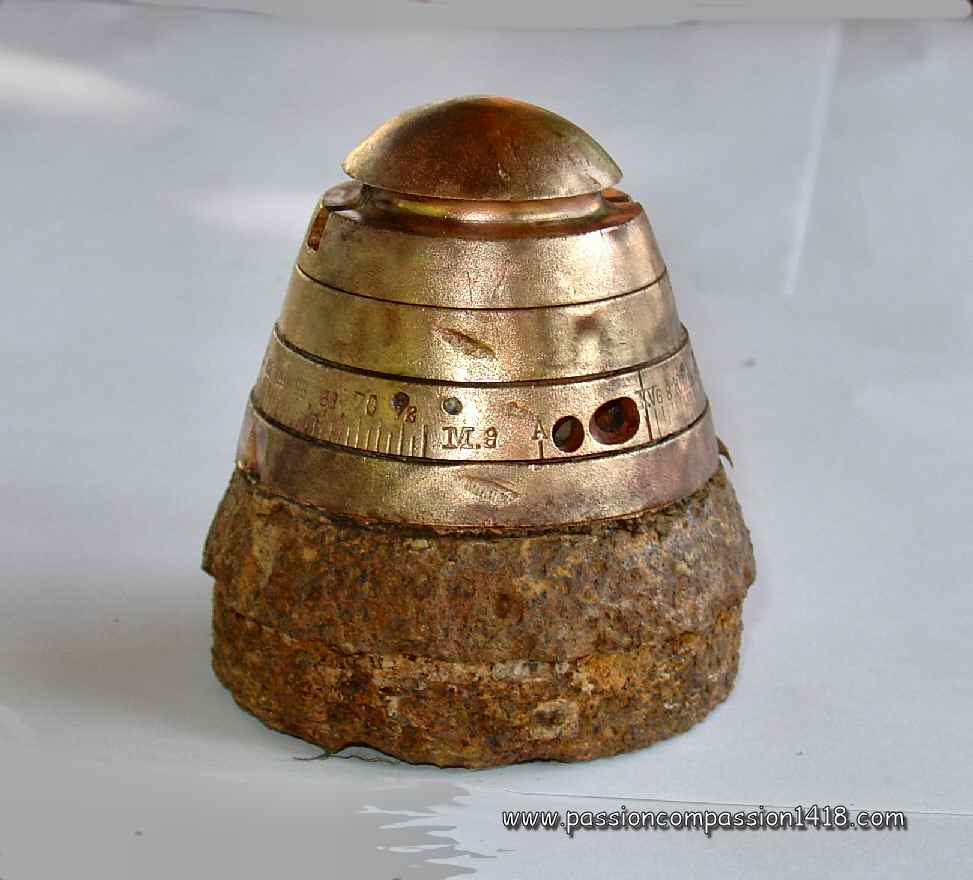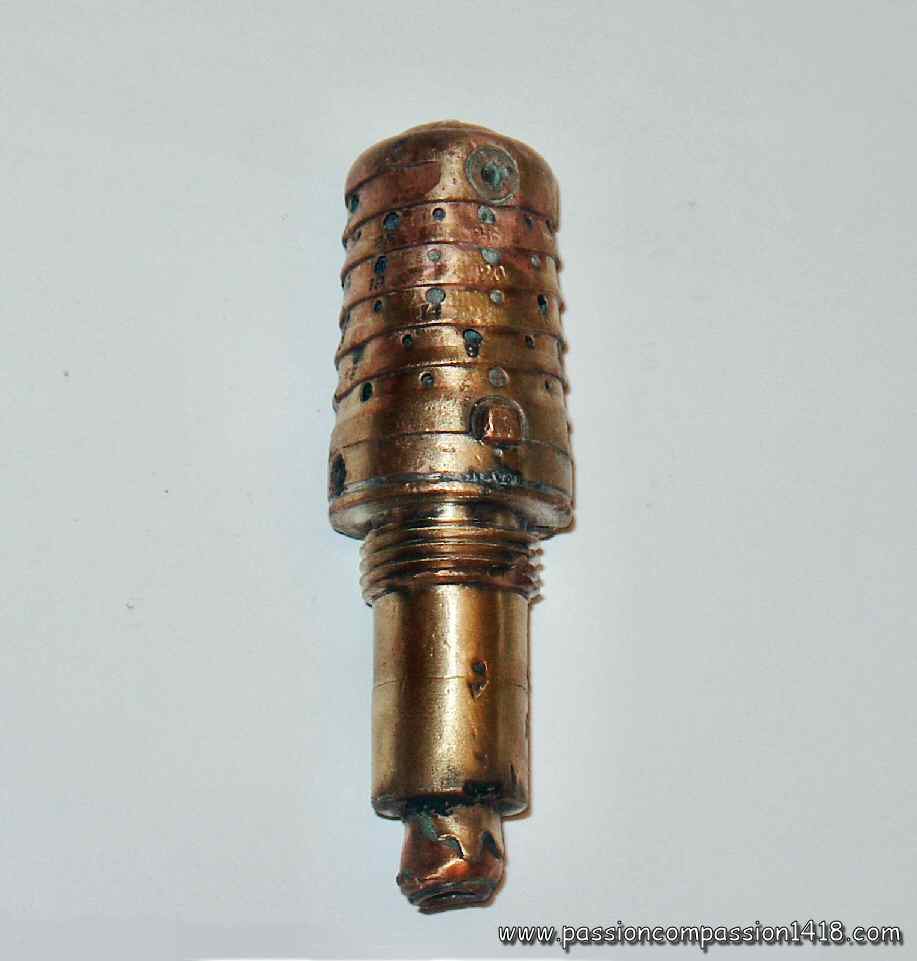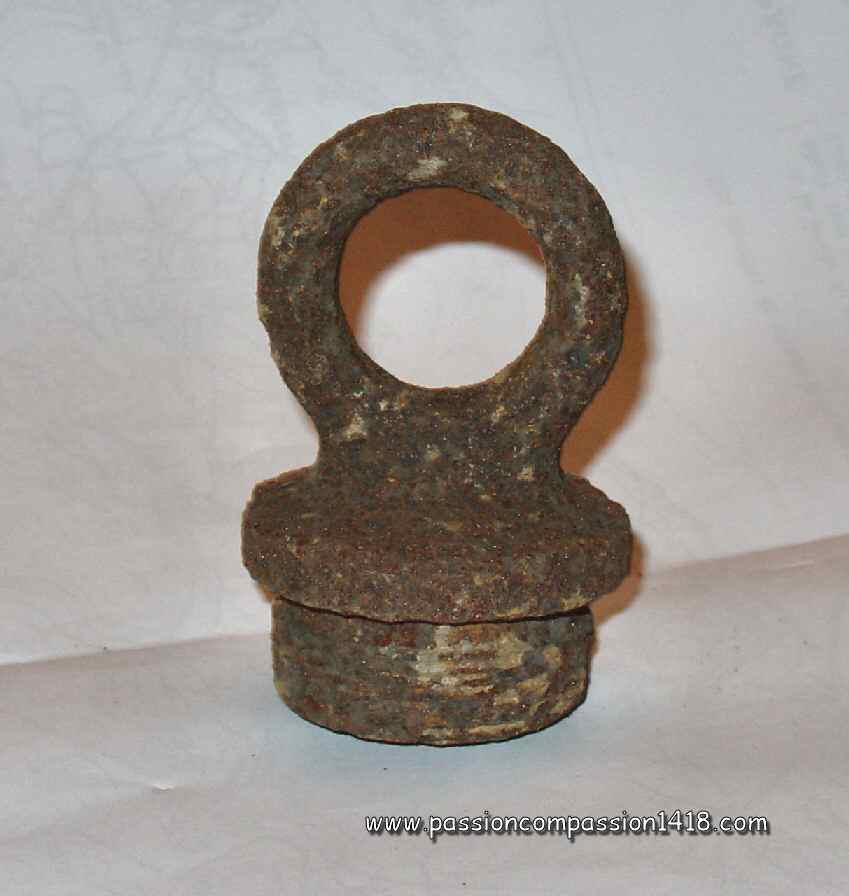fuzes that can be seen on the former battlefields, in museums or sometimes on flee markets are very often given a central role in private WW1 militaria collections. The crucial role of artillery in WW1, by far the first cause of men losses, is certainly the biggest reason why.
I cannot consider those small and apparently innoffensive objects without thinking that the life or death of so many poor soldiers under deadly shell showers was dependant of their 'good' operation...
Although big, this selection is not exhaustive, but the story these fuzes tell is interesting.
Warning :
Artillery fuzes are active components, whose role is to detonate an explosive charge. They did not forgot that mission....
Never touch a fuze that would still be attached to a shell, or still accompanied with a detonator. The army specialists themselves, in charge with the removing of the ancient weapons from the former battlefields, are not taking this kind of risk, preferring to burst those dangerous pieces with an explosion.
A picture is by far less dangerous... All the artefacts presented in these galleries are inert.
PLEASE take a look to the following link, made by French mine-clearer professionals to save your life :
Menu of the WW1 fuzes galleries sorted by nation and type
 |
German fuzes
Direct access to the German fuzes of the Great War |
 |
British fuzes
Direct access to the British fuzes of the Great War |
 |
Austro-Hungarian fuzes
Direct access to the Austro-Hungarian fuzes of the Great War |
 |
Belgian fuzes
Direct access to the Belgian fuzes of the Great War |
 |
French fuzes
Direct access to the Frenchfuzes of the Great War |
 |
Russian fuzes
Direct access to the Russian fuzes of the Great War |
 |
Other nations fuzes
Direct access to other nations (Italy, Turkey) fuzes of the Great War |
 |
Shell plugs
Direct access to a selection of shell plugs of the Great War |
 |
Enigmas
Fuzes that I can nont identify, any help welcome |
Return at the top of the page